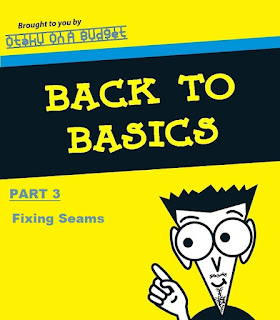Click on the Read More link for the rest of this post...
For this example, I'll be using the "legs" of an SD Neo Zeong. The parts come molded in halves, and simply snapping them together leaves a fugly seam running along the entire surface of the part. It's a good idea to do a test fit to check that the edges come in full contact. If they do not, try trimming the pegs a bit diagonally as shown here.
To fix it, I apply a good amount of plastic model cement along the edges of the potential seam. I'm using Tamiya thin cement for this example. You don't need to apply cement to both sides, just make sure you cover the entire edge of one side.
TIP: do a test fit to make sure the seam edges come in full contact, and that all parts that need to be built inside the assembly you are working with are in place.
Next, I bring the parts together and give it a good squeeze, allowing some of the cement to ooze out, forming a thin ridge where the seam used to be. This means the cement is doing it's job, melting the plastic, and effectively welding the halves together. I allow the cement to dry, then I trim the ridge off carefully with a hobby knife.
Lastly I sand the surface in increasing grits, carefully working around any raised details to preserve them. Some panel lines may need re-scribing if you over-sand, but are typically deep enough that they don't.
And that's it! Remember to apply this technique to those bothersome seams and you'll be well on your way to becoming a better modeler!
Click here for Back to Basics 4
Until next time, keep building plamo!










No comments:
Post a Comment